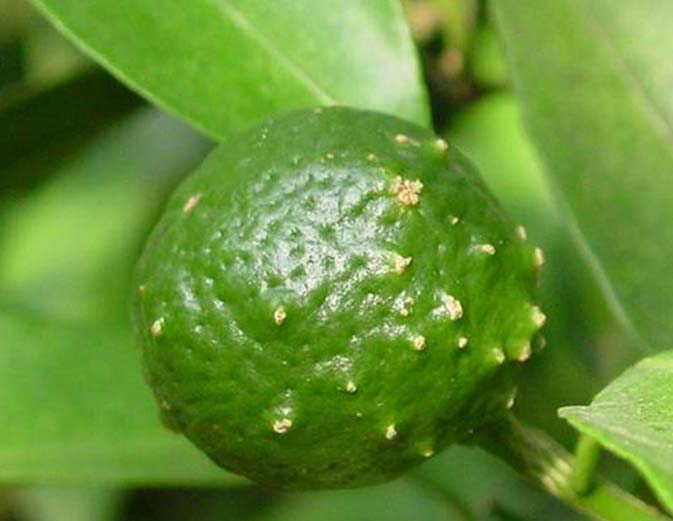
How to control citrus red spider mites scientifically?
Do you know about the red spider mites on citrus trees ?
Citrus red spider mites, it is diminutive size, but its harm should not be underestimated. They frequently gather in clusters on the leaves, shoots, and fruits of citrus, piercing the tissue with their minute mouthparts and voraciously sucking up the juice. Citrus leaves attacked by the red spider will initially show light green spots, as if they have been cast with a faint shade. As the damage continues to escalate, the leaves gradually lose their lustre and turn grey, like paper eroded by time, becoming brittle. In severe cases, the entire leaf will wither and fall off, making the citrus tree resemble a person who has been shaved bald, lacking the vitality and vigour of the past.
The citrus fruit is not spared either. The surface of the young fruit will present light green spots, like a beautiful face with ugly freckles, affecting the appearance and quality of the fruit, significantly reducing the yield of citrus and its commercial value, causing huge economic losses to the growers.

Why are citrus red spider mites so difficult to control?
(1) Strong reproductive ability
Red spider mites can reproduce over ten or even twenty generations within a year, with serious generation overlap. This implies that in citrus orchards, various growth stages of red spider mites may coexist simultaneously, raising the difficulty of control.
Furthermore, the number of eggs laid by red spider mites is also considerable, and an adult female mite can lay an average of 30 to 50 eggs during her lifetime. Under suitable temperature and humidity conditions, the population of red spider mites will increase rapidly, and it may cause severe damage to citrus trees within a short period.


(2) Strong hiding habits:
Red spider mites prefer to perch on the backs of citrus leaves, rolled leaves, branches, and other concealed places. This makes it challenging for us to spray the agent uniformly to the hiding spots of red spider mites during spraying for control, resulting in an unsatisfactory control effect. Additionally, red spider mites will also spin silk on the leaves to form a protective film, further enhancing their resistance and ability to evade agents.
(3) Resistance development
Due to the prolonged use of a single chemical acaricide for control, red spider mites have developed a strong resistance to many commonly used pesticides. This requires us to constantly change products in the prevention and control of red spider mites, increasing the cost and difficulty of control.
How to control citrus red spider scientifically?
(1) Enhance the daily management of citrus orchards
Maintain the cleanliness of the orchard by removing fallen leaves, dead branches, and weeds. Dispose of them by centralized burning or deep burial to minimize the overwintering sites and source of pests for red spider mites. Apply fertilization rationally, with an increased dosage of organic fertilizer, phosphate, and potassium fertilizer to boost the tree vigor and enhance its resistance. Timely prune barren, diseased, and weak branches of citrus trees to ensure good ventilation and light penetration within the canopy. This helps reduce the habitat of red spider mites and improves the spraying and control efficacy of chemicals.
(2) Employ natural enemies or biological product for biological control
Citrus red spider mites has numerous natural enemies such as predatory mites. Predatory mites are the natural nemesis of red spiders as they can prey on the eggs, young mites, and adult mites of red spider mites, achieving remarkable control effects.
COOSA® Pioneering Bio Fertilizer With Dual Effects
Exclusive by crop science company Chico, COOSA® is an amino acid-based fertilizer with unique bio-stimulant , which compounded with multi-function fertilizers of N, K macro elements and trace elements. This product can not only rapidly replenish nutrition to promote strong and solid foliar growth, but also protect flowers and fruits to achieve a significant increase in yield.
Furthermore, COOSA® can effectively resist mites via its biological stimulant effect, without containning any chemical active ingredient.With its dual benefits for crops, this product can help reduce the cost of agricultural inputs.

3. Conduct scientific chemical control
Chemical control is also an indispensable measure, but ensure the use of chemicals is scientific. The timing of control is crucial. In the early stage of red spider occurrence, promptly apply effective acaricides for control to obtain better results. For example , BIFOCAL® ( Bifenazate 25% + Etoxazole 15% SC )is effective for all developmental stages of mites, with egg-killing activity and knockdown activity against adult mites. What’s more, BIFOCAL ® has high safety to crops and minimal effect on predatory mites. It has long duration, which is suitable for high-resistance pest control.

In conclusion, as long as we master scientific prevention and control methods, strengthen management, and use chemical products rationally, we will be able to effectively control the damage caused by red spider mites, allowing citrus trees to thrive and produce abundant fruits."


























